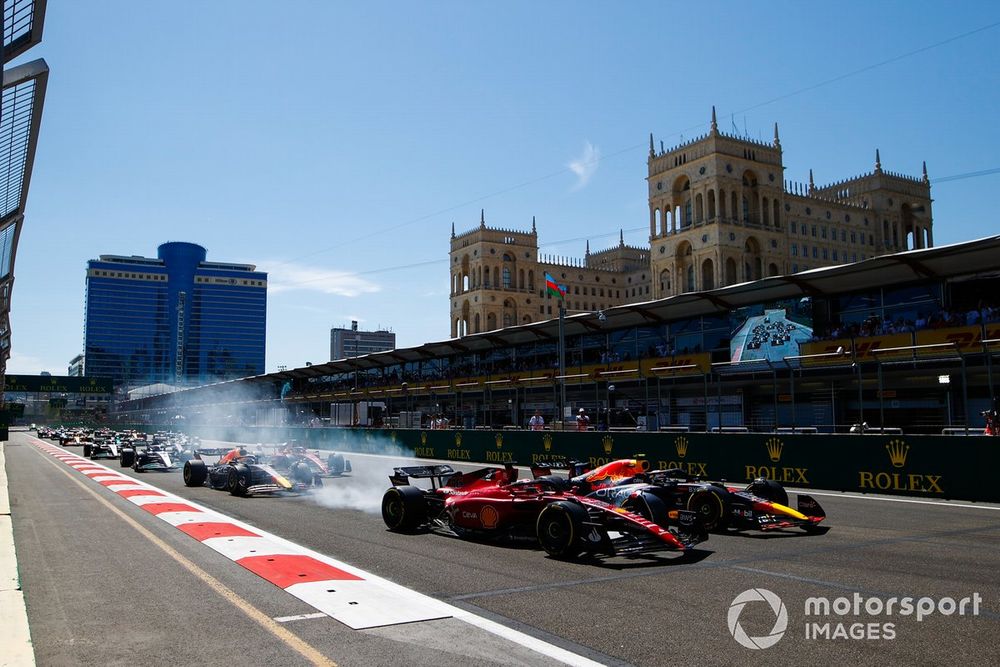
The new-for-2022 regulations were established specifically to improve the spectacle and increase overtaking by reducing the turbulent wake of the cars, with an emphasis on generating downforce from the floor.
But while the gaps between teams have closed up since last year, producing one of the most competitive midfields in recent history, the on-track spectacle remains a point of concern.
A distinctly lacklustre Azerbaijan Grand Prix brought the topic of how well this crop of cars race back into the limelight, with several drivers questioning why Baku's main straight DRS zone was shortened after a race in which it proved almost impossible to pass despite the long straights.
Red Bull duo Verstappen and Perez proved the exception as their RB19's extremely efficient DRS device and superior top speed allowed them to breeze past Charles Leclerc's Ferrari.
But even they acknowledged that overtaking has become more difficult compared to last year due to the extra downforce the teams have added to the cars. And they warn the situation will therefore only get worse if the current rules are maintained.
"I feel this year certainly has become a little bit harder," Perez said. "These cars are generating a bit more downforce and by generating that little more downforce, the car behind struggles a little bit more to follow.
"So, in my opinion, it wasn’t the right thing to shorten up the DRS, because it's getting harder to overtake than last year already in itself so it's something we should review."

Verstappen added: "Yeah, like Checo said, I think the more downforce we generate - and that, of course, will always be every year - if you keep the rules the same it will be harder to pass."
But according to the Dutchman there is more at play than just dirty air. The ever-increasing weight of the cars - up to 798kg in 2023 - and the stiffer suspensions needed to exploit the ground-effect have made it harder to attack.
"Because of the weight of the cars we have nowadays, because they're quite heavy, in the low speed it’s a bit harder to follow," Verstappen explained.
"As soon as you have a tiny moment with that weight, it becomes a bigger slide, it's harder on the tyres so you overheat the tyres more.
"And also with these new type of cars, you have to run them super stiff whereas I remember like 2015 or ‘16, you could sometimes [take] a few different lines, you could run a kerb because the cars were quite - well, not soft - but it's still a lot softer than what we run now.
"And you could do a few different kinds of techniques and lines but that is really, really hard nowadays because the cars just don't allow it."







